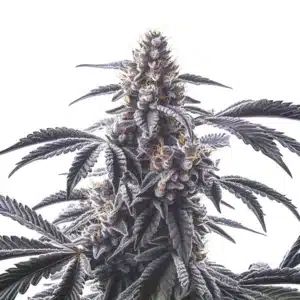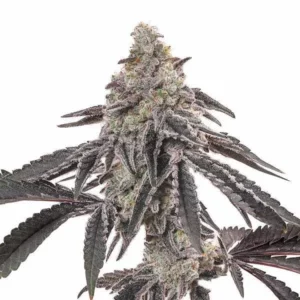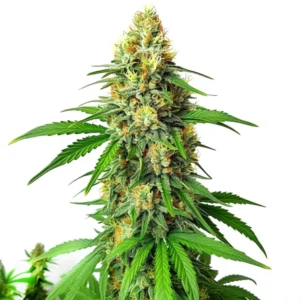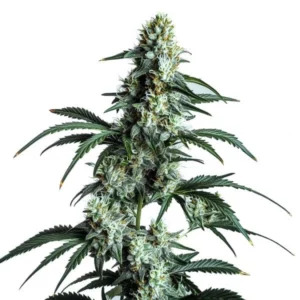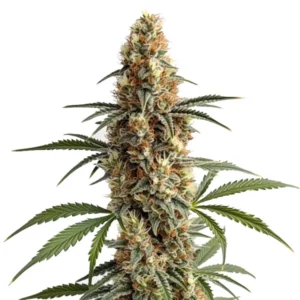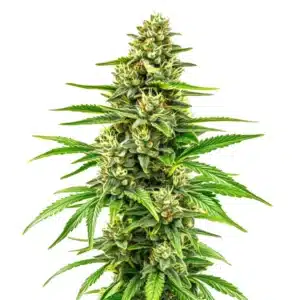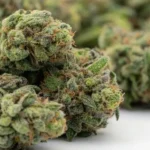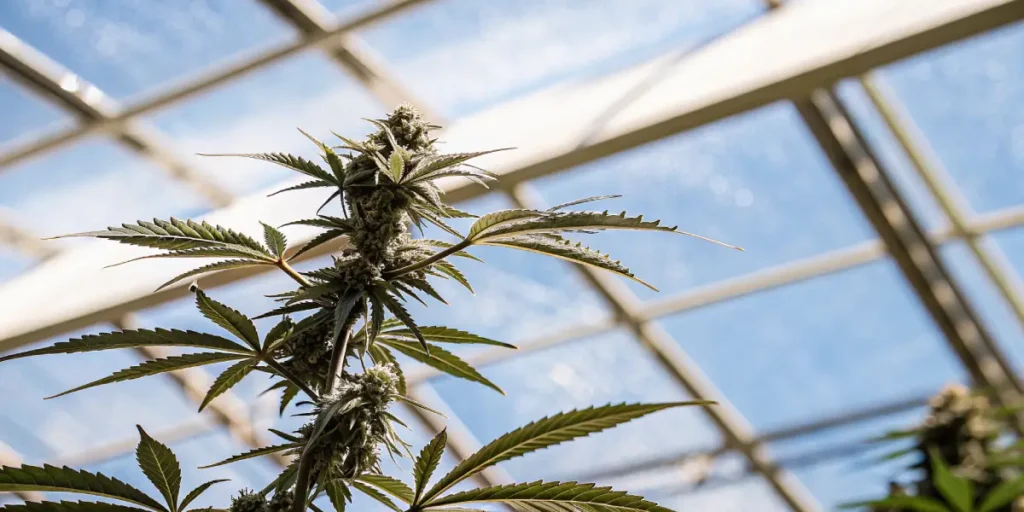
Is Oxidative Stress Bad for Marijuana Plants?
Oxidative stress might sound like a mouthful, but it’s something every marijuana grower should know about. It happens when marijuana plants produce more reactive oxygen species (ROS) than they can handle. These are harmful molecules that can damage cells and affect the plant’s overall health. Is oxidative stress bad for marijuana plants? Yes if left unchecked, oxidative stress can be highly detrimental to cannabis growth and yield.
Many growers often ask, “Is oxidative stress bad for marijuana plants?” The short answer is yes. It can lead to stunted growth, reduced yield, and even plant death. But don’t worry! Knowing the signs and how to manage oxidative stress can help you keep your cannabis plants healthy and thriving.
Recommended Strains
Blackberry Moonrocks
|
|
THC | 26% - 33% (High) |
|
|
Type | Feminized |
|
|
Yield | High |
|
|
Phenotype | 80% Indica / 20% Sativa |
Blue Dream
|
|
THC | 17% - 24% (Medium) |
|
|
Type | Feminized |
|
|
Yield | High |
|
|
Phenotype | 50% Indica / 50% Sativa |
Let’s dive into the effects of oxidative stress on marijuana plants and how you can prevent and manage it. Whether you’re a first-time grower or have been cultivating cannabis for years, knowing oxidative stress is essential for a successful harvest.
Effects of Oxidative Stress on Marijuana Plants
The effects of oxidative stress on marijuana plants can be severe. When ROS levels are high, they can damage the plant’s cells and tissues. This damage can manifest as brown spots on leaves or wilting. Over time, oxidative stress can lead to more significant issues like reduced plant vigor and lower yields.
Another way oxidative stress affects cannabis growth is through its impact on photosynthesis. Since photosynthesis is how plants produce energy, any disruption can lead to slower growth and weaker plants. This is why it’s crucial to address oxidative stress promptly to ensure healthy plant development.
Furthermore, oxidative stress can weaken the plant’s immune system, making it more susceptible to pests and diseases. This vulnerability can compound the adverse effects, leading to a vicious cycle of poor plant health. Therefore, knowing the effects of oxidative stress on marijuana plants is crucial for maintaining robust growth.
Besides to physical manifestations, oxidative stress can also affect the plant’s biochemical processes. It can interfere with nutrient uptake and metabolism, further reducing the plant’s ability to thrive. Recognizing these effects early can help growers implement effective strategies to mitigate the impact of oxidative stress on marijuana plants.
Signs of Oxidative Stress in Marijuana Plants
Identifying signs of oxidative stress in marijuana plants early on can save your crop. Look for brown or yellow spots on the leaves, which indicate cellular damage. Leaves may also curl or wilt, showing that the plant is under duress.
Another sign to watch for is slower growth. If your plants aren’t growing as quickly as expected, oxidative stress might be the culprit. Regularly monitoring your plants for these signs can help you catch problems early and take action before it’s too late.
Subtle changes in leaf coloration and texture can also be indicative of oxidative stress. A glossiness or an unusual sheen on the leaves might suggest an imbalance in the plant’s oxidative state. Monitoring these early signs is crucial for timely intervention.
Besides to visible signs, plants under oxidative stress may emit a weaker or different aroma. This change in scent can be a useful indicator for growers familiar with their plants’ normal characteristics. Paying attention to these sensory cues can aid in early detection and response.
Managing Oxidative Stress in Cannabis Cultivation
Managing oxidative stress in cannabis cultivation involves maintaining optimal growing conditions. Ensure your plants receive the right amount of light, water, and nutrients. Overexposure to light or water stress can exacerbate oxidative stress.
Using antioxidants in your feeding regimen can help neutralize ROS. Products rich in vitamins C and E are particularly effective. Regularly monitoring and adjusting your plant’s environment can prevent oxidative stress from becoming a significant issue.
A proactive approach to managing oxidative stress in cannabis cultivation includes regular soil and water testing. These tests can help you detect imbalances in nutrient levels that might contribute to oxidative stress. By addressing these imbalances, you can create a more stable growing environment.
Consider integrating companion planting strategies to enhance your management efforts. Certain companion plants can naturally repel pests and improve soil health, indirectly reducing oxidative stress factors. This holistic approach can be instrumental in maintaining plant vigor and resilience.
Promos & Deals
Preventing Oxidative Stress in Cannabis Plants
Preventing oxidative stress in cannabis plants starts with knowing its causes. Environmental factors like high temperatures and excessive light exposure can increase ROS production. Maintaining a stable climate is key.
Implementing a robust feeding schedule that includes antioxidants can also help. These compounds can protect plant cells from oxidative damage. Regular checks and adjustments based on plant feedback are vital in preventing oxidative stress.
Incorporating shade cloths or light diffusers can be an effective way to prevent oxidative stress in cannabis plants, especially in regions with intense sunlight. These tools help regulate the amount of light your plants receive, preventing overstimulation and stress.
Additionally, employing mulch or ground cover can help maintain consistent soil moisture levels, reducing the risk of water-induced oxidative stress. This layer helps regulate soil temperature and moisture, creating a more balanced environment for plant growth.
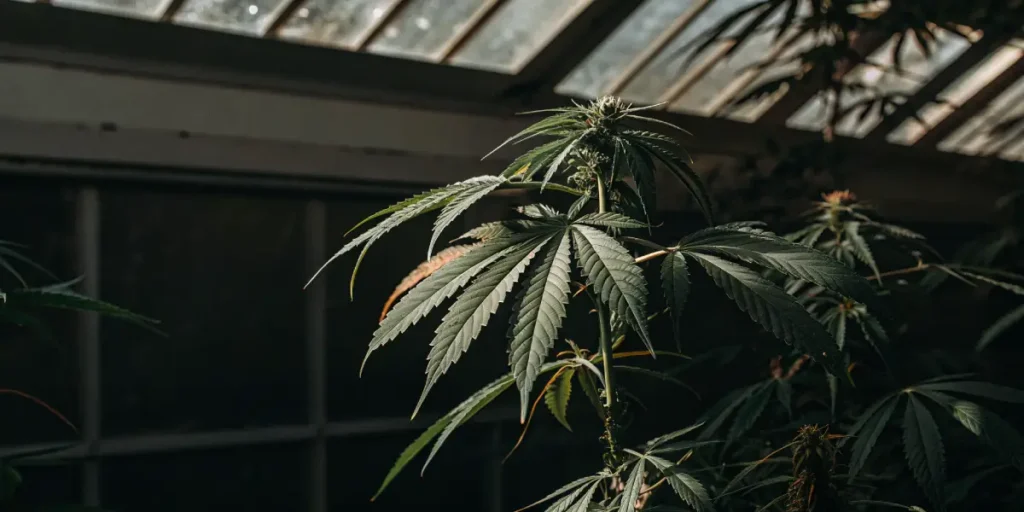
FAQs
What causes oxidative stress in marijuana plants?
Oxidative stress in marijuana plants is primarily caused by an imbalance between the production of ROS and the plant’s ability to detoxify these harmful molecules. Environmental stressors like excessive light, heat, or drought can trigger this imbalance.
To mitigate these causes, ensure your growing environment is well-regulated. Keeping temperature and humidity levels in check, along with providing adequate nutrients, can help maintain a balance and prevent oxidative stress.
Other factors contributing to oxidative stress include poor soil quality and inadequate air circulation. Ensuring that your plants have access to fresh air and well-draining soil can significantly reduce the risk of oxidative damage.
Regularly testing the pH and nutrient levels in your growing medium can also help you identify potential stressors before they escalate. Maintaining a balanced growing environment is essential for minimizing the causes of oxidative stress in marijuana plants.
How can I tell if my cannabis plants are suffering from oxidative stress?
Look for physical symptoms like brown spots on leaves, wilting, or curling. These are classic signs of oxidative stress. Additionally, stunted growth or a decrease in yield can also indicate that your plants are struggling.
Regular observation of your plants can help you detect these signs early. Ensure you check your plants frequently, especially during stressful environmental conditions, to catch any issues before they escalate.
Besides to visual cues, plants suffering from oxidative stress may display altered growth patterns, such as irregular leaf shapes or asymmetrical growth. These anomalies can serve as early warning signs.
Monitoring plant behavior, such as changes in water uptake or nutrient absorption, can also provide insights into their oxidative state. Deviations from the norm might suggest that oxidative stress is affecting your plants.
Can I reverse the damage caused by oxidative stress?
While some damage from oxidative stress might be irreversible, you can often halt further damage by addressing the underlying issues. Adjust environmental factors, improve nutrient intake, and consider adding antioxidants to your regimen.
Quick action can improve your plant’s health and reduce the impact of oxidative stress. It’s crucial to keep monitoring and adjusting your growing conditions to support recovery and future growth.
Implementing a recovery plan that includes stress-reducing techniques, such as foliar feeding with antioxidants, can help speed up the healing process. This method allows for direct absorption of nutrients and antioxidants, aiding in damage repair.
Providing consistent care and addressing stressors promptly can help your plants recover over time. Although not all damage can be reversed, maintaining optimal conditions can promote new, healthy growth.
Are there any cannabis strains that are more resistant to oxidative stress?
Yes, some strains are naturally more resilient. For instance, Blackberry Moonrocks, Blue Dream, and Gelato are known for their strength under challenging conditions.
Choosing these strains can be advantageous, especially if you are new to growing or face difficult environmental conditions. They can provide a buffer against potential oxidative stress.
When selecting strains, consider those with a reputation for robust growth and disease resistance. These traits can offer additional protection against the effects of oxidative stress on marijuana plants.
Strains with a diverse genetic background often exhibit greater adaptability to various stressors. This genetic diversity can be a valuable asset in managing oxidative stress in cannabis cultivation.
Should I use supplements to manage oxidative stress?
Supplements, particularly those containing antioxidants like vitamins C and E, can be beneficial in managing oxidative stress. These antioxidants help neutralize ROS, protecting your plants from damage.
Incorporate these supplements into your feeding schedule for the best results. However, always ensure a balanced approach, as overuse can lead to other nutritional issues.
Besides to antioxidants, consider supplements that enhance overall plant health, such as those promoting root development and nutrient uptake. A comprehensive approach can fortify your plants against oxidative challenges.
Always follow manufacturer guidelines when using supplements to avoid potential adverse effects. Proper dosing ensures that your plants receive the benefits without risking nutrient imbalances.




